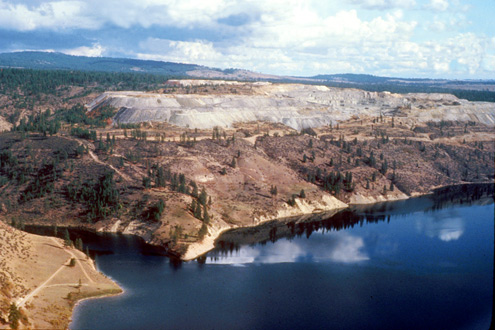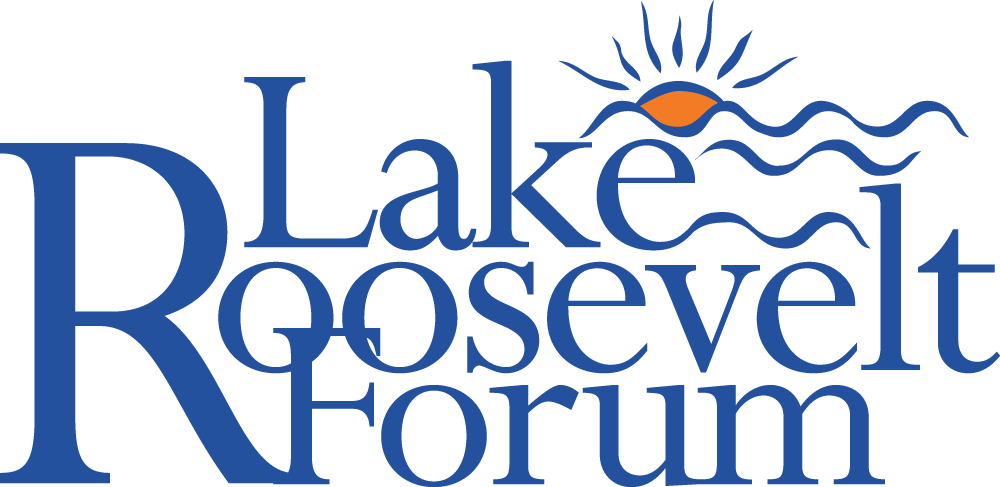Annually, about 2.5 million acre feet (or over 814 billion gallons) of water is pumped from Lake Roosevelt into Banks Lake to support irrigation.

Generally, these water diversions occur between March and October. Via canals and other means, water from Lake Roosevelt irrigates about 671,000 acres of land. Combined with the naturally rolling countryside, nourishing and drainable soil, a long growing season, and breezes strong enough and frequent enough to minimize frost pockets, the result is one of the world’s most bountiful croplands. A map of the irrigable lands shows that they reach as far south as the Tri-Cities and irrigate lands in four different counties.
Without irrigation, this bounty would not be possible. Farmers and ranchers could not sustain operations with, at best, six inches of rainfall that mostly fall before the summer growing season. Before irrigation was introduced, lack of rain combined with the searing heat of the high desert environment drove people with the best of intentions from the land they came to till.
With irrigation, which officially began in 1948, over 3,500 farms employ over 13,000 people and sustain more than 90 crops worth with an estimated production value of over $3 billion in 2021. The top 5 crops are apples, potatoes, wheat, hay and onions. Collectively, they represent about half the production value of crops grown.
Irrigation water is pumped from Lake Roosevelt by the Grand Coulee Pump-Generating Plant. Here, 12 huge pumps lift the water up 280 feet into Banks Lake, which is a 27-mile-long reservoir that extends south to the town of Coulee City. A main canal then takes the water to three large canals that extend a total of 333 miles and serve as main arteries to laterals. Almost 2000 miles of laterals carry water to croplands for irrigation.
Since the early 2000s, development and implementation of the Odessa Groundwater Replacement has been the focus of irrigating additional Columbia Basin Project lands. Here, groundwater has been depleted to such an extent that water must be pumped from wells as deep as 2,400 feet. The Department of Ecology in collaboration with the Bureau of Reclamation has secured enough water to move 90,000 acres of farmland from wells to irrigation when the project is completely built out. Click here for Washington Department of Ecology updates.
30,000-acre feet of this water—enough to support 10,000 acres of irrigation—comes from the Lake Roosevelt Incremental Storage Release Program. This results in the lake being drawn down 12 to 18 inches each August for a very brief time. Another 30,000-acre feet of water is being secured through coordinated conservation programs with Columbia River Basin irrigation districts.
Learn more and receive updates about the Columbia Basin Project from the U.S. Bureau of Reclamation, Washington Department of Agriculture, and Columbia Basin Development League websites.

